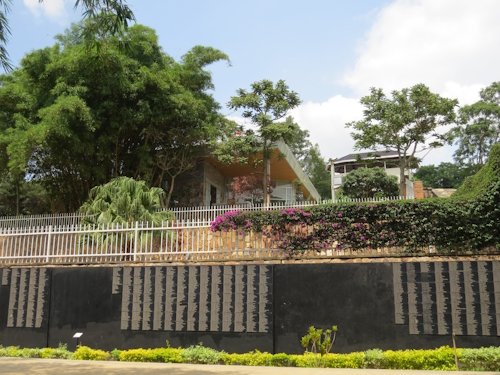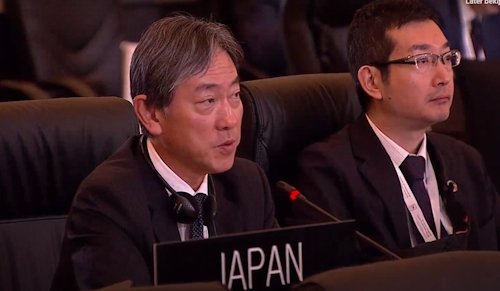The combined 2022/2023 WHC Session happened in a more orderly fashion than we got used to in the past years, thanks to innovations like the ‘Celebration Room’ and what seemed like some pre-meeting diplomacy regarding Russia and Israel. What seems to never change is giving a WHS to the host country ( 'Uruq Bani Ma'arid , see first photo, thanks to Jarek) - and this year this 'courtesy' was even extended to the host that couldn't be one in 2022, Kazan .
42 new sites were selected – a mixed bunch. Find below some aspects that warrant a closer look.

1. Missing WHS
From our Missing List , we saw the inscription of Jericho and Klondike , and of Westhoek - which became part of the 139 locations of the Funerary and memory sites of the First World War .
2. Almost the first one 'Built in the 21st century'
Rwanda's Kigali Genocide Memorial was built in 1999. This makes it the youngest WHS to date, we're on the tipping point to including sites from the 21st century. The three following 'youngest' WHS now are Sydney Opera House (1973), Rachid Karami International Fair-Tripoli (1967-1975) and, arguably also the ESMA site Museum , which got its 'function' in 1976-1983. Note: three of these four 'young' WHS were inscribed this year, including the extraordinary session in February.
3. 44 years to inscription: Bale Mountains
It took Ethiopia's Bale Mountains NP 44 years to get inscribed. It was first nominated in 1979, got a Deferral, and has been left to rest since. It only resurfaced in 2021, but at the time another site was given preference by the State Party. In 2023 Bale finally got inscribed, without debate.
4. Tea, coffee and beer – no vineyards!
I've searched the full collection of ICOMOS evaluations, and the word 'vineyard' only appears once: in the comparative analysis for Zatec. What we got instead was Saaz Hops , used globally in beer production, Pu’er tea production, and the coffee growers of Gedeo . Also, the natural site of Bale Mountains "serve as a genetic reservoir for Wild Forest Coffee".

5. Two trends from 2020/2021 continued
We've seen two trends continue from the previous session : ICOMOS pushing for Name changes, and a rising number of sites inscribed on a single criterion only. 35% were 'singles' during 2020/2021, in 2022/2023 we saw 17 out of 42. That's 40%! Before 2020, the average was 15%. It seems to confirm that the sites we see now have less diverse qualities; we also hardly encounter a site inscribed on criterion i ("a masterpiece of human creative genius") anymore.
6. The worst WHS year in history?
At the time of writing, the average rating by our community of the sites for 2022/2023 stands at 2.67. As you can see from the full overview , that is the lowest ever. All bad? Not necessarily so - this rating is strongly impacted by a number of cultural sites that people do not get excited about (Zatec, Kuldiga, Kaunas, Viking Fortresses, ESMA, Hopewell, Djerba to name a few). The non-European, mostly natural, sites have not been rated at all, or only by people who barely got a glimpse of them. I foresee improvement here over the years. (Thanks to Nan for pointing out this statistical anomaly.)
7. IUCN filling its gaps
The IUCN representative at a certain point stated that they find that too few natural sites are nominated, as there are still so many gaps to fill. This session brought 5 natural sites filling gaps , as confirmed by IUCN in their evaluations, such as Central Asian deserts, Evaporitic Karst, and a new habitat for the Arabian Oryx.
8. Engaged WHC members were few and far between
It was a WHC without much debate, at least among WHC members. No voting let alone secret ballots needed. Many decisions were precooked by Amendments submitted well before the discussion. Almost every representative resorted to reading prepared statements when he/she was allowed to speak. In this light, it was a delight to watch the Japanese representatives act. They asked questions where this was necessary, spoke without a script (in what is not their native language) and sometimes from the heart ("we don't know!"). Several times also they did not support the consensus.

9. Africa's largest peat bog
Among the remarkable places 'hidden' in the nominations I found Kamiranzovu swamp in Nyungwe NP . It holds nearly 1,300 ha of peat bog, reportedly the largest peat bog in Africa. It preserves "pollen archives of at least 200,000 to 300,000 years."
10. Horror vacui
ICOMOS may dislike Epic Subtitles, but they introduced their own flowery element in the description of Sacred Ensembles of the Hoysala . "The extremely complex stellate plans with rhythmically indented walls of the Hoysala style temples, their horizontal sculptural bands, and multitier friezes featuring intricate and hyper-real detail across all levels of sculpture reflect an exuberant horror vacui (fear of emptiness) of exterior and interior surfaces..."



